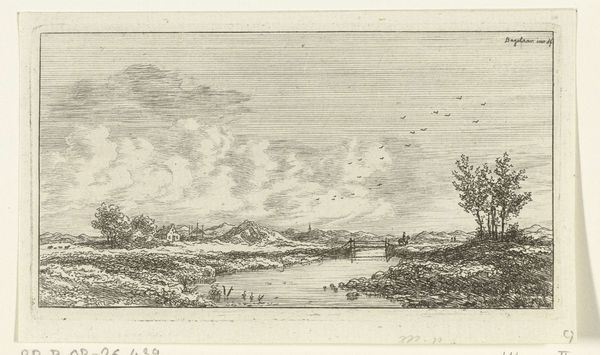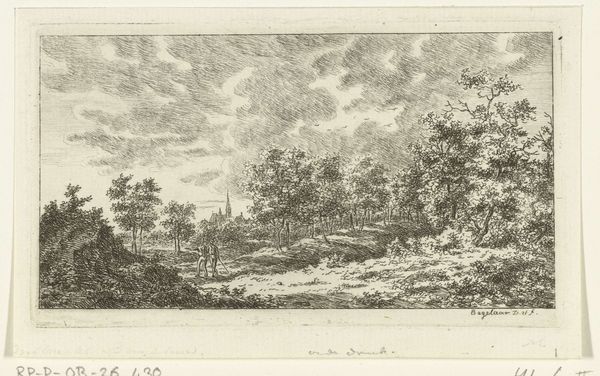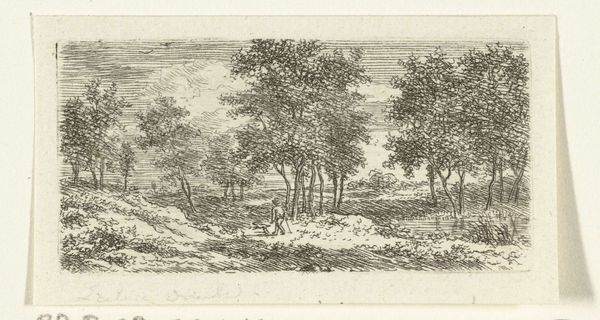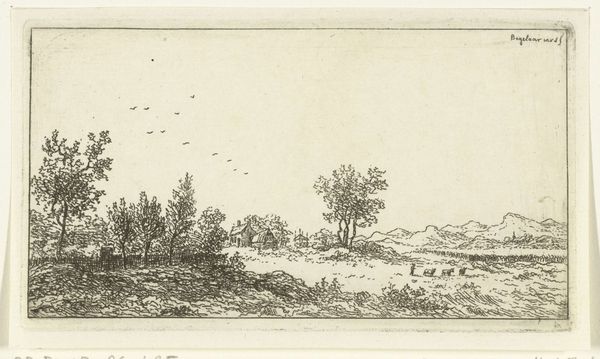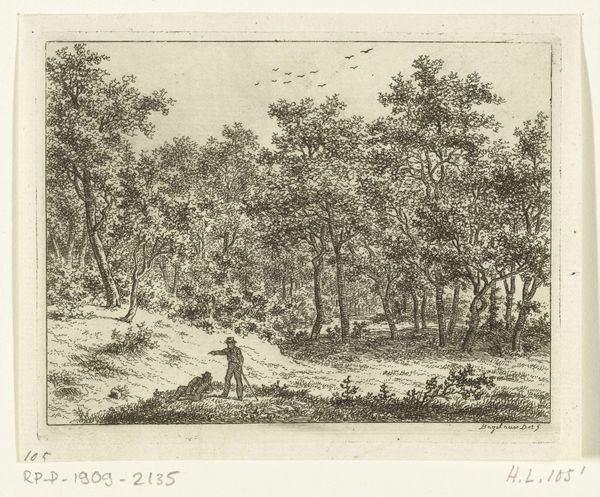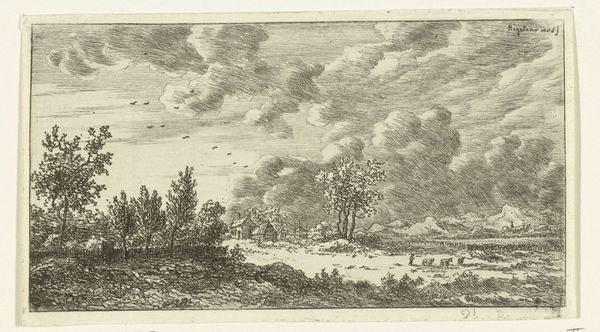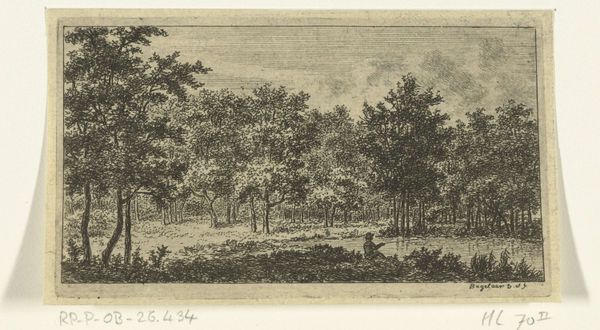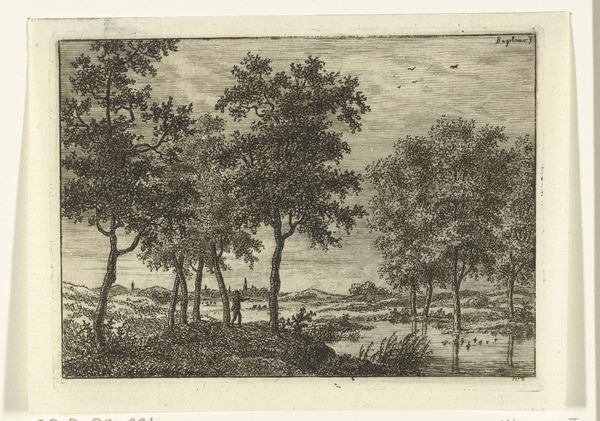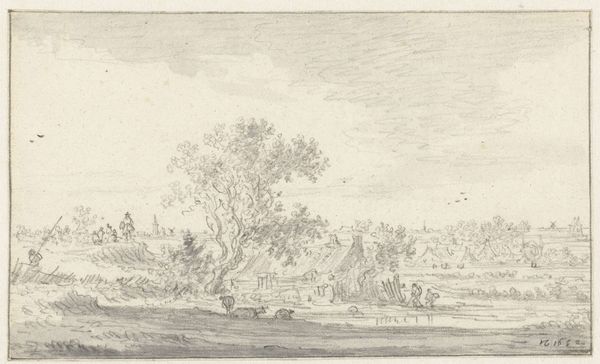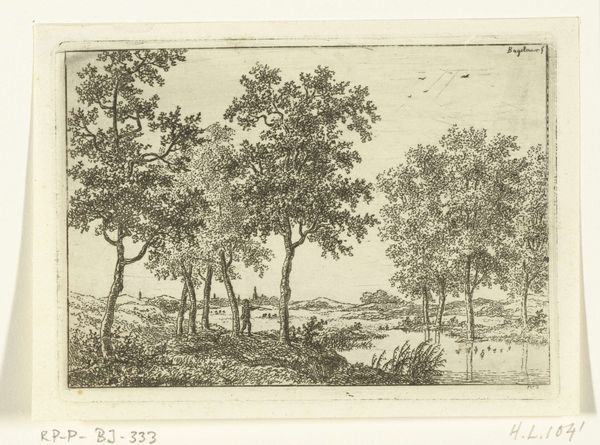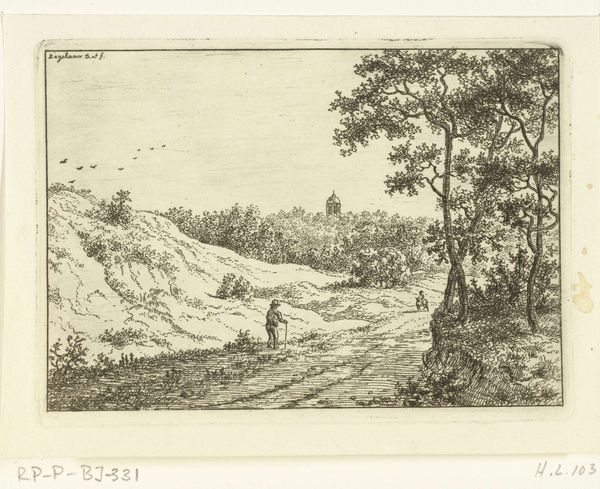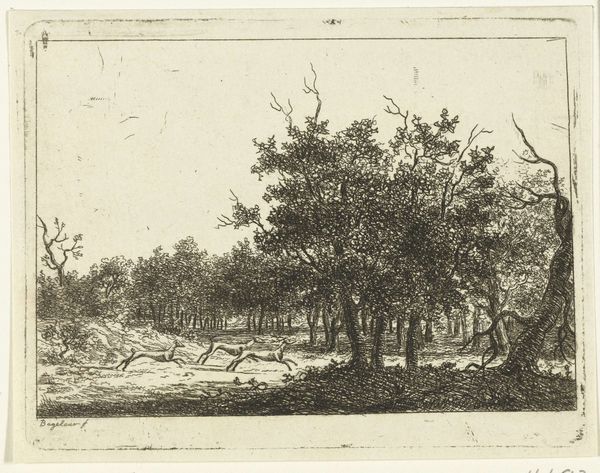
drawing, print, etching, ink
#
drawing
# print
#
etching
#
old engraving style
#
landscape
#
etching
#
figuration
#
ink
#
ink drawing experimentation
#
romanticism
Dimensions: height 74 mm, width 130 mm
Copyright: Rijks Museum: Open Domain
Editor: This is "Landschap met twee wandelaars," a landscape created between 1798 and 1837 by Ernst Willem Jan Bagelaar. It’s an etching, so primarily ink on paper. I’m immediately struck by how serene and almost pastoral the scene is. Two figures, seemingly walking towards a distant town. What do you see in this piece? Curator: The “serene” quality you identify really resonates, especially when viewed through the lens of its historical context. This was a time of immense upheaval with the rise and fall of Napoleon. These quiet, seemingly undisturbed landscapes became popular as a kind of visual balm. Do you think the focus on nature might also carry a specific social or political commentary? Editor: Perhaps, a longing for a simpler time, away from societal pressures? A way to subtly critique urbanization and industrialization through idealizing rural life? Curator: Exactly. The landscape isn't just pretty; it becomes a space to negotiate ideas of national identity and cultural values, almost an archive of those themes. What do you make of the size of the figures within this grand landscape? Editor: They’re small, almost dwarfed by the environment. It suggests a sense of humility or perhaps the insignificance of the individual against the backdrop of nature’s power? Curator: Yes! And I'd argue that this diminished scale allowed viewers to see themselves in that landscape, inviting them to connect with the idealized scene. And there is an inherent critique. While nature is available to all, not all have equal access to it, and leisure activities such as nature walks are class based. It reveals the disparities in who gets to experience this idealized vision. Editor: That’s a perspective I hadn’t considered before. Thank you, I’m understanding a new facet of landscape art today. Curator: And I was prompted to reconsider the painting's original function as a status symbol for a growing middle class.
Comments
No comments
Be the first to comment and join the conversation on the ultimate creative platform.

